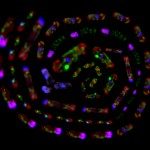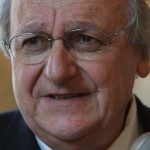Link to Pubmed [PMID] – 19084610
Fungal Genet. Biol. 2009 Mar;46(3):264-76
The genomic sequence of the type strain of the opportunist human pathogen Candida glabrata (CBS138, ATCC 2001) is available since 2004. This allows the analysis of genomic structure of other strains by comparative genomic hybridization. We present here the molecular analysis of a collection of 183 C. glabrata strains isolated from patients hospitalized in France and around the world. We show that the mechanisms of microevolution within this asexual species include rare reciprocal chromosomal translocations and recombination within tandem arrays of repeated genes, and that these account for the frequent size heterogeneity between chromosomes across strains. Gene tandems often encode cell wall proteins suggesting a possible role in adaptation to the environment.






